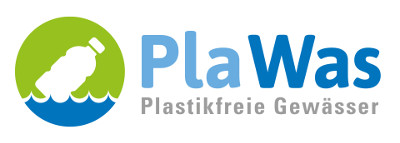Current Studies
More and more studies demonstrate that tiny plasctic particles have reached the most remote corners of the world – and constantly surround us in our daily life.
Rivers
 Professor Dr. Christian Laforsch (University of Bayreuth) calls it a “anthropogenic basic load of plastic particles in waters”. From 2014 to 2017, a team of researchers under his leadership has taken and analyzed water samples in 22 rivers, focusing on the drainage area of the Rhine and Danube. The team has detected (micro)plastics at all sampling sites.
Professor Dr. Christian Laforsch (University of Bayreuth) calls it a “anthropogenic basic load of plastic particles in waters”. From 2014 to 2017, a team of researchers under his leadership has taken and analyzed water samples in 22 rivers, focusing on the drainage area of the Rhine and Danube. The team has detected (micro)plastics at all sampling sites.
The project comprising several federal states was run with a specially developed “mini mantra trawl”, allowing only a semi-quantitative evaluation below its mesh size of 300 micrometers. Nonetheless, almost two thirds of the unequivocally identified particles lay in the lowest size range. The lower limit for identification via FTIR spectroscopy was at 20µ.
Much more research is necessary “to exactly understand the origin, the temporary deposit and the permanent remaining of microplastics in waters”, said the scientist at the presentation of the study. Higher contaminations have been proved especially in small and medium waters, which have a higher part of wastewater.
Mikroplastic Report of German Federal States (pdf, German) – published in 2018
Mountains
 Researchers of the Geographical Institute of the University of Berne have used a new method to examine 29 floodplain soils throughout Switzerland – from Geneva to Grisons. The respective drainage areas cover 53% of Switzerland.
Researchers of the Geographical Institute of the University of Berne have used a new method to examine 29 floodplain soils throughout Switzerland – from Geneva to Grisons. The respective drainage areas cover 53% of Switzerland.
Microplastic particles have been proved even in the samples of remote mountain areas, indicating that microplastics are transported by the air and thus spread uncontrollably.
Press release of the University of Berne (German) – published in 2018
Tap Water
 In 2017, a study on plastics in tap water led by the US-based non-profit journalist network “OrbMedia” caused some turmoil. Scientists sampled tap water worldwide and looked for traces of plastic fibres. 83% of the 159 samples of 500ml proved contaminated, with regional values of 72% (Europe) to 94% (USA, Beirut). The size of the identified fibres went down to 2,5 micrometers. The Hamburg University of Applied Sciences (HAW Hamburg) had already provided evidence of the microplastic particle’s tendency to accumulate toxic substances.
In 2017, a study on plastics in tap water led by the US-based non-profit journalist network “OrbMedia” caused some turmoil. Scientists sampled tap water worldwide and looked for traces of plastic fibres. 83% of the 159 samples of 500ml proved contaminated, with regional values of 72% (Europe) to 94% (USA, Beirut). The size of the identified fibres went down to 2,5 micrometers. The Hamburg University of Applied Sciences (HAW Hamburg) had already provided evidence of the microplastic particle’s tendency to accumulate toxic substances.
Whilst the media picked of the research with large headlines, the Federal Environmental Agency (UBA) questioned the method of the study. Microplastic contanimation could easily have entered the samples by the air during the study, they said, adding that the soil’s cleansing effect does not let the results appear particularly plausible. Furthermore, the absolute number of detected fibres (1.9 in Europe and 4.8 in the US) is rather low.
Study from OrbMedia – published in 2017
Meals
 We consume more than 100 tiny plastic particles with every meal. This is the result of a study of the University of Edinburgh. In three households, scientists put petri dishes with a sticky surface on the dining table during meals. After the meas of about 20 minutes, the researchers examined the petri dishes which had absorbed plastic particles and dust from the air. Converted to a dish of average size, they found up to 114 plastic particles. For a whole year, that is 68,415 potentially dangerous particles.
We consume more than 100 tiny plastic particles with every meal. This is the result of a study of the University of Edinburgh. In three households, scientists put petri dishes with a sticky surface on the dining table during meals. After the meas of about 20 minutes, the researchers examined the petri dishes which had absorbed plastic particles and dust from the air. Converted to a dish of average size, they found up to 114 plastic particles. For a whole year, that is 68,415 potentially dangerous particles.
The scientists referred to upholstered furniture and synthetic tissue, for example in carpets or clothes, as a source. Besides the consumption of food, plastic particles can also be absorbed breathing in.
Release of the Heriot Watt University of Edinburgh – published 2018
Human Stool
 In a pilot study of the Austrian Federal Environmental Agency and the Medical University of Vienna, microplastics have been discovered in human stool for the first time – at all of the eight international probands. On average, the researchers detected 20 microplastic particles per 10 gramms of stool. “In our laboratory, we could substantiate nine different types of plastics, ranging from 50 to 500 micrometers”, says Bettina Liebmann, expert for analysis on microplastics at the Federal Environmental Agency. Polypropylene and polyethylene terephthalate were found most often in the samples.
In a pilot study of the Austrian Federal Environmental Agency and the Medical University of Vienna, microplastics have been discovered in human stool for the first time – at all of the eight international probands. On average, the researchers detected 20 microplastic particles per 10 gramms of stool. “In our laboratory, we could substantiate nine different types of plastics, ranging from 50 to 500 micrometers”, says Bettina Liebmann, expert for analysis on microplastics at the Federal Environmental Agency. Polypropylene and polyethylene terephthalate were found most often in the samples.
“Even though there are first signs indicating that microplastic can harm the gastrointestinal tract by fostering inflammatory reactions or by the absorption of harmful accompanying substances, more studies are necessary in order to evaluate potential dangers of microplastics for human beings”, lead author Schwabl resumes. The results are the basis for further research at a bigger scale.
Press Release of the Austrian Federal Environmental Agency – published in 2018
Nature Conservation Areas
 Researchers from the Geographical Institute of the University of Berne have used a new method to examine 29 floodplain soils throughout Switzerland – from Geneva to Grisons – for the first time. “Even though the sites are located in nature conservation areas, microplastic was found in 90 percent of the soils”, says Moritz Bigalke, one of the scientists involved. His co-author Michael Scheurer classifies the results as “alarming”. Recent studies suggest that microplastic in soil can kill earthworms – with negative consequences on soil fertility.
Researchers from the Geographical Institute of the University of Berne have used a new method to examine 29 floodplain soils throughout Switzerland – from Geneva to Grisons – for the first time. “Even though the sites are located in nature conservation areas, microplastic was found in 90 percent of the soils”, says Moritz Bigalke, one of the scientists involved. His co-author Michael Scheurer classifies the results as “alarming”. Recent studies suggest that microplastic in soil can kill earthworms – with negative consequences on soil fertility.
The highest concentrations of microplastic were found in areas larger plastic waste in the ground. In this scenario, microplastic presumably results from the fragmentation of larger particles, even without the influence of saltwater. Moreover, the study proved a correlation between the size of the population in the drainage area of the river and the concentration of microplastics: The more people live in the drainage area, the more polluted is the soil. The research time extrapolated the total amount of microplastic in the soil of Swiss floodplains: 53 tons in the upper layer of 5 centimeters.
It is one of the first research work done on the occurence of microplastics in soils at all. The scientist assume that the concentrations found in the floodplains is considerably lower than for example in agricultural soil.
Press release of the University of Berne – published in 2018
Polar Sea
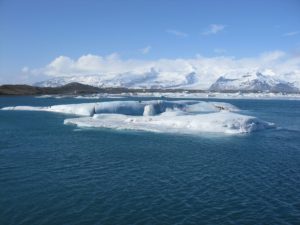 Researchers of the Alfred-Wegener-Institute, Helmholtz Centre for Polar and Marine Research (AWI) have found more microplastics than ever bevor in the arctic sea ice. Sample from the years 2014 and 2015, stemming from five different areas of the Arctic Ocean, contained a contentration of up to 12,000 microplastic partcles per liter of sea ice. About two thirds belonged to the smallest category of the study, 50 micrometers and below.
Researchers of the Alfred-Wegener-Institute, Helmholtz Centre for Polar and Marine Research (AWI) have found more microplastics than ever bevor in the arctic sea ice. Sample from the years 2014 and 2015, stemming from five different areas of the Arctic Ocean, contained a contentration of up to 12,000 microplastic partcles per liter of sea ice. About two thirds belonged to the smallest category of the study, 50 micrometers and below.
The plastic residues were distributed so characteristically in the ice that the scientists could trace them back: Till the great garbage patch on the one hand. On the other hand, the high share of varnish and nylon point towards the increasing marine traffic and fishery in the Arctic Ocean. Hence, local pollution plays a role besides global sources.
“Through our examination, we have established that more than half of the particles enclosed in the ice was smaller than 50 micrometers. At this size, they may easily be eaten by arctic microorganisms such as Ciliates, but also copepods”, says AWI biologist Dr Ilka Peeken. She classifies the findings as “really alarming”.
Thus the floes transport a huge number of microplastic particles (back) to the south, for example to the coast of Greenland. The further itinary of the plastics is not yet known. Measuring taken in the AWI deep sea observatory “HAUSGARTEN” suggests that many particles rapidly sink into deep.
Presse release of the AWI (German) – published in 2018
Salt
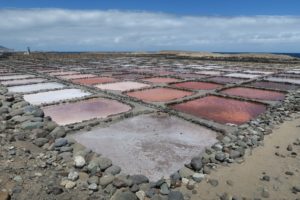 The TV broadcast “Markt” (market) of Northern German public channel NDR had different samples of commercial sea salt and fleur de sel analysed at the Institute of Biololy and Marine Chemistry of the University of Oldenburg. All examined samples showed plastic residue, with fleur de sel having higher amounts than sea salt.
The TV broadcast “Markt” (market) of Northern German public channel NDR had different samples of commercial sea salt and fleur de sel analysed at the Institute of Biololy and Marine Chemistry of the University of Oldenburg. All examined samples showed plastic residue, with fleur de sel having higher amounts than sea salt.
Dr Barbara Scholz-Böttcher, representing the Institute of Biololy and Marine Chemistry, said on the origin of the pollution: “Plastics in salt is a consequence of the careless disposal of plastics during decades. This holds a mirror to society. The plastic waste returns on the dinner plate in a very high-quality product.”
Report of the NDR broadcast “Markt” (German) – published in 2018
Mineral Water
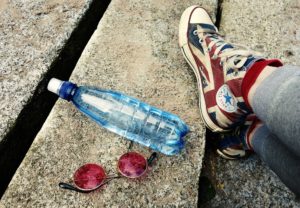 Since the end of 2015, the project “Microplastics in Food, Animal Feed and Cosmetics” run by the Authority for Chemical and Veterinary Investigation Münsterland-Emscher-Lippe (CVUA-MEL) in cooperation with the Westphalian Friedrich Wilhelm University of Münster, examines microplastics with a focus on food and cosmetics. The team found microplastic particle in all samples of their first study, using the so-called Raman spectroscopy. This method is the first to proceed to a size range of 5 to 20 micrometers.
Since the end of 2015, the project “Microplastics in Food, Animal Feed and Cosmetics” run by the Authority for Chemical and Veterinary Investigation Münsterland-Emscher-Lippe (CVUA-MEL) in cooperation with the Westphalian Friedrich Wilhelm University of Münster, examines microplastics with a focus on food and cosmetics. The team found microplastic particle in all samples of their first study, using the so-called Raman spectroscopy. This method is the first to proceed to a size range of 5 to 20 micrometers.
The project analysed 38 mineral waters in non-returnable and returnable PET bottles, glass bottles and beverage packages. In all types of packages, microplastic particles were found in the small (50-500 micrometers) and very small (1-50 micrometers) ranges, 80% of which belonged to the smallest category of 5-20 micrometers.
Mineral waters from returnable PET bottles turned out to be most polluted. The researchers concluded that “plastic packaging can also emit microplastic particles that are directly absorbed by the consumer”. As a surprise came the high concentration of microplastics in some of the glass bottles, with wide variations within one type.
Study of the CVUA-MEL (German) – published in 2018
The Washington D.C. -based organization of journalism „Orb Media“ has conducted a study in cooperation with the University of New York to examine more than 250 water bottles of leading brands. The plastic bottles were collected in 19 different sites on five continents.
The results showed that 93% of the samples had plastic residues. Again, the number of identified particles dramatically increased with decreasing particle size.
Report from Orb Media – published in 2018
Another study (German) had also found plastic particles in German beer before.
Deep Sea Organisms
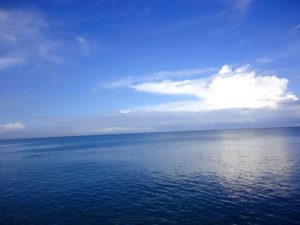 In ultra-deep trenches, plastic pollution has been found as well. Scientist from Newcastle University analysed animals from six of the deepest places of the Pacific Ocean from Japan to Chile and found plastics in almost all of the 90 samples. The crustaceans from the almos 11,000 meters deep Mariana Trench all contained plastics of different origin, such as fibres.
In ultra-deep trenches, plastic pollution has been found as well. Scientist from Newcastle University analysed animals from six of the deepest places of the Pacific Ocean from Japan to Chile and found plastics in almost all of the 90 samples. The crustaceans from the almos 11,000 meters deep Mariana Trench all contained plastics of different origin, such as fibres.
Dr Alan Jamieson, head of the project, was not surprised by these results: “Litter discarded into the oceans will ultimately end up washed back ashore or sinking to the deep-sea, there are no other options.” The ecosystems of the deep-sea are so poorly explored that no comparative data from the time before plastic pollution exists. Jamieson assumes that nowadays, there are no marine ecosystems free from plastic contamination at all anymore.
In the depth range of 300 – 1800 meters, plastics had already been found (German) in sediment samples before. Subsequent examinations of the organisms living on the ground in that range as well as their predators confirmed the occurrence of micro fibres in animals like corals, craylets or sea cucumbers.
According to Jamieson, highly specialized organims live in the deep sea, adapted to an environment with few food. Those creatures often eat anything that descends from the surface.
Press release of Newcastle University – published in 2017
